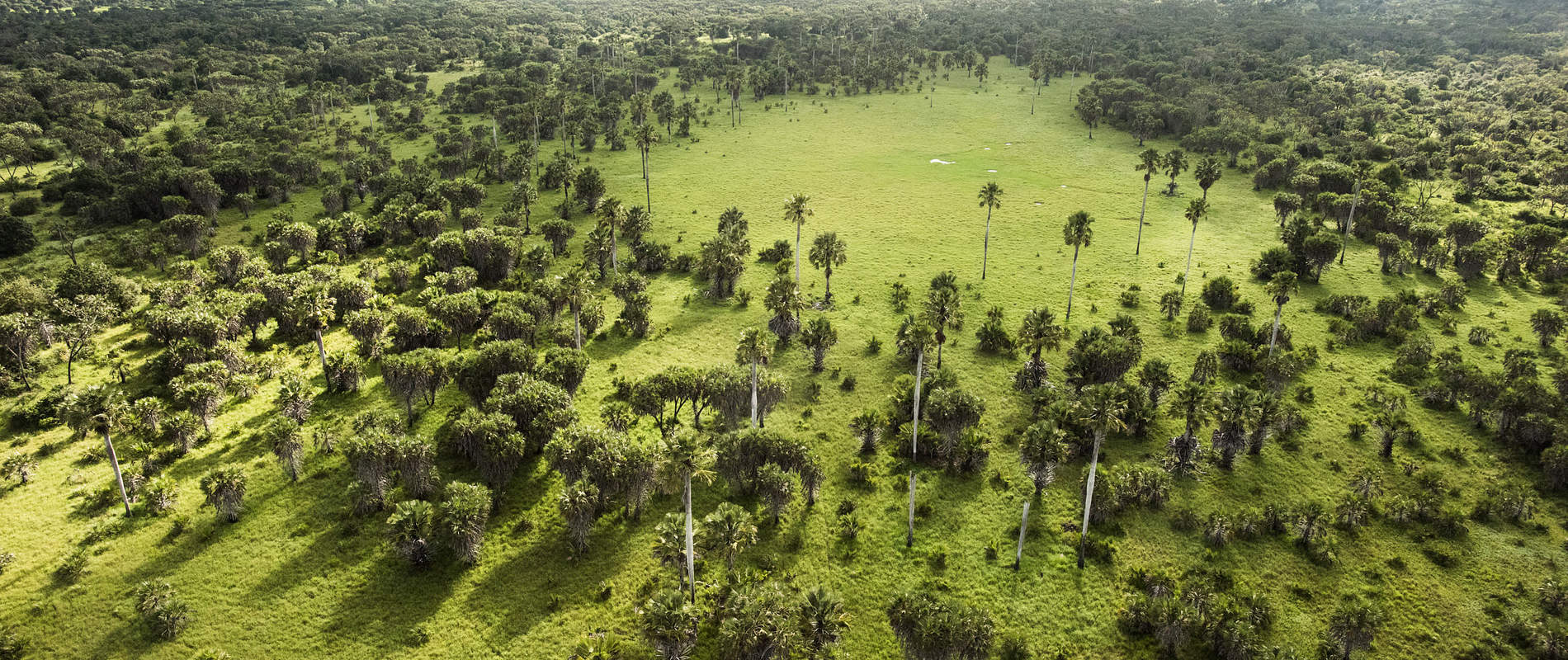Habitat protection and regeneration is paramount to securing a future for all species. Through our tree planting and reforestation projects we are replenishing ecosystems: Preserving pristine coastal forests, savannahs and ground water forests, while protecting the animals that call these places home.
Within our Saving Habitats project we are actively protecting over 350,000 acres of precious habitat in Kenya, from the Kibwezi Forest, home to elephants including our Umani Springs orphans, to Amu Ranch, a 64,000 acre area of natural beauty that has been set aside for wildlife under the management of the Lamu Conservation Trust (LCT), in partnership with the Sheldrick Wildlife Trust (SWT).
More than double the size of Nairobi National Park, small herds of elephants, as well as large populations of many other important species, including reticulated giraffe, Cape buffalo, topi and eland can all be found in Amu, on Kenya's north coast . There is also a healthy population of some of the most genetically diverse lions in East Africa, with individuals exhibiting characteristics of the typically maneless Tsavo lions, as well the unique blue-eyed Somali lions.


As one of the last frontiers in Kenya, this region hasn’t been densely settled by people, however, the whole area is now coming under immense pressure from illegal squatters. Both government land and privately-owned land such as Amu are being targeted by waves of settlers that are coming from all over the country to clear land and establish new farms. Unfortunately, the area is ill-suited for most types of agriculture, owing to the sandy, nutrient-poor soil, which means that farmers are clearing even more land after just a few years. Age old forests have been lost and wild habitats fragmented, posing a real and immediate threat to the wider ecosystem.
In order to protect this habitat, we need to draw a line in the sand. Creating a natural barrier of trees to the south west corner of Amu, where human encroachment is most intense, will act to prevent further loss of habitat, provide a buffer-zone for wildlife and, importantly when considering our responsibility to tackle climate change, offer a wall of trees able to capture carbon emissions.

A Green Line of trees will be planted in the south west section of Amu

Human encroachment from the south will be halted by the Green treeline
In Amu, we plan to roll out an ambitious planting project, known as the Amu Green Line, in two phases. In phase one, 260,000 trees will be planted along a plotted GPS line in the south west corner of the ranch, as shown in the satellite photographs above. The treeline will cover a distance of 13.2 km, with a depth of 100 metres, and naturally, all of the trees will be indigenous species. We are currently seeking donations to meet the US$30,000 budget for this project: On Earth Day 2021, our supporters generosity raised US$15,000 for our habitat protection and reforestation initiatives. If you would like to help us grow the Green Line in Amu, and to plant trees to replenish forests, please use the donate option on our Saving Habitats page.
The planting of the forest line in Amu will provide employment for hundreds of people, create habitat for a myriad of species of insect, bird and mammal, as well as dozens of endangered, coastal, plant species that are under increasing threat due to deforestation. The forest will also form a buffer to the Amu conservancy, and eventually provide other benefits to the neighbouring communities.
The long-term vision is to expand the Green Line to a depth of 200 metres and to extend it along the settled side of several other protected areas, including Witu Livestock, Witu Forest, and Kipini Conservancy which abuts the Indian Ocean. Where appropriate and under careful management, the forest will also include agroforestry trees for timber, fruit and firewood on the community side of the line, in order provide further benefits to those populations that currently exert the greatest pressure on the land and its natural resources.
Lamu Conservation Trust and the Sheldrick Wildlife Trust have partnered with Eden Reforestation Projects (ERP) to embark on tree planting projects in Kenya, including an existing project to replenish the coastal mangrove forests in the region: Since July 2020, over 1.9 million mangroves have been planted in the Milihoi Channel that penetrates Amu, while ERP have since expanded their planting efforts to Manda, with almost 3 million mangroves have now been planted. This partnership allows us to capitalise on Eden Reforestation Projects economies of scale, with EPR planting tens of millions of trees in Africa every month. This means that every tree planted in Amu will cost just 11.5 cents (GBP £0.085 / EUR 0.09).
We have already expanded our existing tree nursery at Amu to be able to hold over 200,000 seedlings and have begun collecting seeds. With funding support, additional nursery staff can be hired from local communities and the necessary equipment and materials can be sourced to allow for wider seed collection, and the tending of seedlings, so that we can be ready to plant the trees when the next rainy season is upon us.

